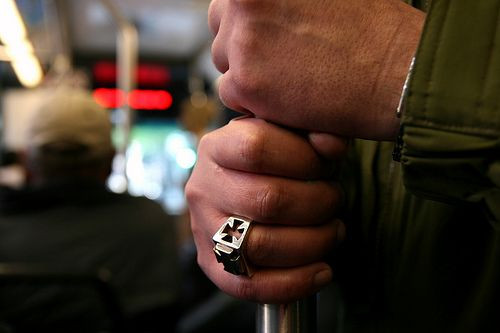Go Ahead And Crack Your Knuckles: The Risk Of Arthritis Is A Myth

Is there a more satisfying feeling than interlacing all eight fingers, bending them back, and sending a rippling crack through the base of each knuckle? When you first discovered this mysteriously cathartic trick as a child, you were probably shunned for it. “You’ll get big knuckles and arthritis,” an adult once told you. As it turns out, you were being fed a myth. Despite the decades of perpetuated wives’ tales and familial scare tactics, cracking your knuckles has no scientific basis for leading to arthritis.
Some studies have found cracking your knuckles leads to weaker, swollen hands. In those studies, participants’ grip strength was reduced when they had cracked their knuckles habitually throughout their lives. But the crucial question is whether cracking your knuckles leads to osteoarthritis. For that question, the answer among scientists is a resounding “No.”
One 2011 study examined both the rate of incidence and the frequency of knuckle cracking among 215 respondents ages 50-89. The team found no difference between those who cracked their knuckles on a regular basis and those who abstained from the habit, meaning that modest knuckle cracking — say, twice a day — is no unhealthier than doing so every 15 minutes.
“We also calculated ‘crack-years,’ which roughly quantified the total amount of exposure to this behavior,” the report stated. “This allowed investigation of a possible ‘dose–response’ relationship between the mechanical effects of KC and OA. Again, when looking at KC of each joint type, we found no significant correlation of KC ‘crack-years’ with OA in the respective joint.”
Further back, a 1975 study involved 28 residents of a Jewish nursing home in Los Angeles that were polled about their knuckle cracking habits. Surprisingly, those who had habitually cracked their knuckles showed lower rates for osteoarthritis than the subjects who hadn’t.
“The data fail to support evidence that knuckle cracking leads to degenerative changes in the metacarpal phalangeal joints in old age,” the researchers concluded. “The chief morbid consequence of knuckle cracking would appear to be its annoying effect on the observer.”
What’s Going On?
Between each joint (i.e. the point where two bones meet) lies a cushioning bed of synovial fluid. This fluid allows each bone to articulate in prescribed directions without pain. When you crack your knuckles, the space between the joints increases, causing the gases dissolved in the fluid to expand into bubbles, which then merge with one another and eventually pop under the fluid’s pressure. After you crack a knuckle, you typically have to wait 15-30 minutes because the gases need time to dissolve back into the fluid.
Anywhere from 25 percent to 54 percent of people crack their knuckles habitually, depending on which population was studied. And while just over one-fifth of the U.S. population has arthritis, the data upholding knuckle cracking as a predictor of the condition is thin, if oblique, to the overall argument.
One 1990 study found “no increased preponderance of arthritis of the hand in either group” being tested; however, the team “concluded that habitual knuckle cracking results in functional hand impairment,” such as hand swelling and decreased overall grip strength.
The researchers drew a link between degrading synovial fluid concentrations to the erosion of ship propellers and the blades of hydraulic turbines. Physiologically, when the joint has tension applied to it, the bubbles that are formed — through a process known as cavitation — cause the synovial fluid to tend toward low-pressure areas. Over time, this rushing and popping could cause wear and tear to the surrounding cartilage and joint.
“Given the potential damage caused by this cavitation phenomenon,” the team concluded, “one might expect habitual knuckle cracking to cause some decrement in hand function, if not accelerate the onset of osteoarthritis of the hand.”
60 Years Of Cracking
All the data are eclipsed, perhaps, by one study that took place over the course of more than 60 years by an allergist named Dr. Donald Unger. The California doctor cracked the knuckles on his left hand twice daily since he was a teenager, making sure never to crack the knuckles on his right — in order to use it as a control.
"I'm looking at my fingers, and there is not the slightest sign of arthritis in either hand," said Unger, who in 1998 published his findings in the journal Arthritis and Rheumatism and received the satirical Ig Nobel Prize in 2009, at the age of 83, for his work.
At the ceremony, held at Harvard University, Unger joked that he received no public funding for his study, and that all acclaim he had received for his work as an allergist paled in comparison to his work in knuckle cracking.
"I've gotten a lot of awards and degrees, and all of a sudden I get my 15 minutes of fame out of this stupidity,” he said of the study, which was inspired by countless warnings from his mother never to crack his knuckles. “But I'm happy to get any award — I've got a blank space on my wall."
Published by Medicaldaily.com



























